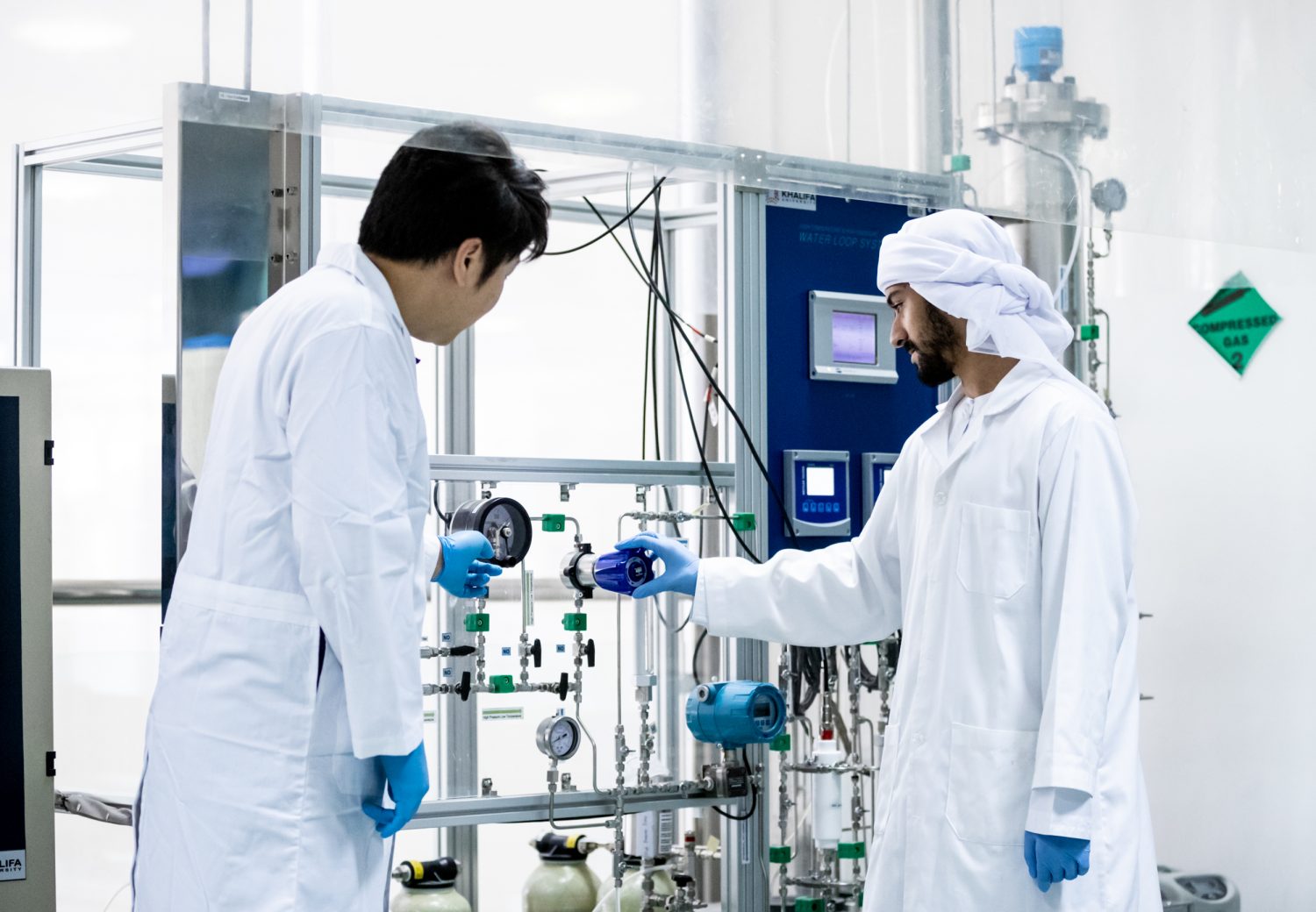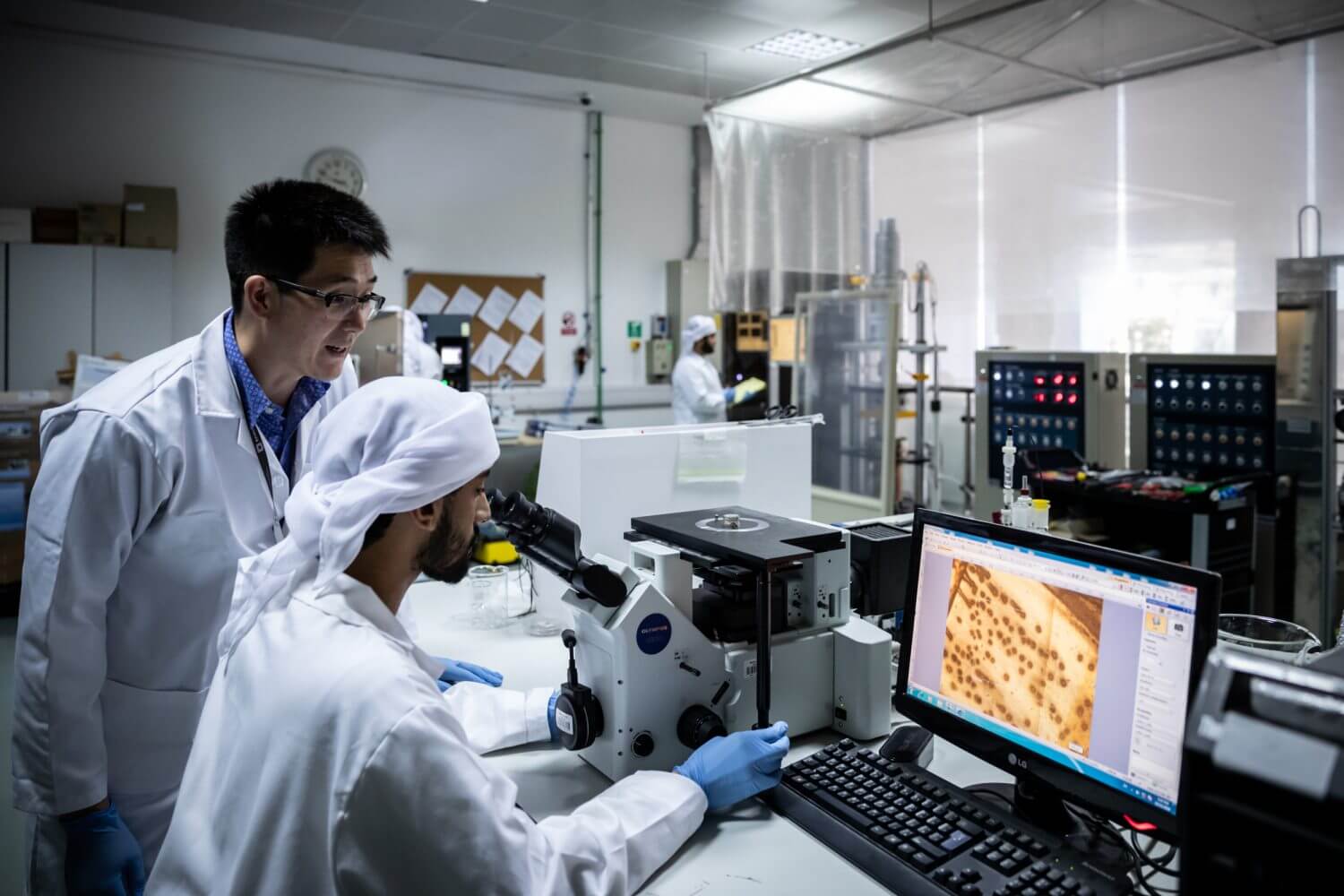Nuclear Systems and Safety
This theme aims to assess the thermal hydraulic safety analysis codes by validating their predictions against experimental data obtained from integral effect test facilities such as the ATLAS facility at KAERI, in order to identify and validate the dominant thermal hydraulic phenomena occurring in NPPs under accident scenarios, including rare events. The main drive for selecting these topics is that thermal hydraulic studies on, beyond design based accident for the advance pressurized water reactor APR1400, is one of the immediate necessities that the NPP program needs to develop in order to guarantee safe operation of these power plants.
Project: Benchmarking and Verification & Validation (V&V) of Lumped Parameter and Computational Fluid Dynamics (CFD) codes
Principal Investigator: Dr. Ho Joon Yoon
All countries, in which nuclear power plants (NPPs) are being operated including the UAE, are required to maintain technical competence in thermal-hydraulics for nuclear reactor safety evaluations. These assessments are usually carried out using system-scale safety analysis codes. It is evident that before embarking on the NPP licensing practice using these codes, a “must do” validation process against experimental data is required. This will be achieved through:
- Using the experimental database, generated from integral effect test facilities, to validate predictive capability and accuracy of computer codes and models.
- Carry out an assessment of codes currently in use for thermal-hydraulic safety analyses in order to improve the local technical competence in thermal-hydraulics for nuclear reactor safety (NRS) evaluations.
Project: Codes Development and Validation for the Predictions of Rare Events
Principal Investigator: Dr. Yacine Addad
Despite all accident prevention measures adopted in nuclear power plants (NPPs), some accident scenarios with very low probabilities may occur, as proven by the Fukushima-Daiichi’s accident, resulting in severe accidents (SA) with core melting and plant damage. Under such condition, the core is overheated and a melt pool might form in the lower plenum of the reactor vessel. Therefore, a good understandings of the associated failure mechanisms effects on the lower head vessel and a thermal load to the outer reactor vessel under the IVR-ERVC condition (In-Vessel corium Retention through External Reactor Vessel Cooling) are necessary. This will be achieved through:
- Examine the ability of existing numerical approaches to correctly predict the chronological phenomena occurring during corium/steel interactions.
- Improve exiting numerical algorithms to make CFD approach more computational cost effective, hence achieving a shorter and more affordable physical simulation time.
Nuclear Materials and Chemistry
Theme 2 deals with the integrity of components and structures in Nuclear Power Plants (NPPs) from the aspect of material degradation. Most materials in NPPs have suffered from various degradation phenomena by aging. The type and degree of the degradation depends on the operational conditions including environmental, mechanical, and materials conditions. Since such material degradation by aging could affect the structural integrity of components, it should be understood well and managed properly.
Project 1: Primary water stress corrosion cracking (PWSCC)
Principal Investigator: Dr. Yongsun Yi
Primary water stress corrosion cracking (PWSCC) is a degradation phenomenon occurring in the main components at the reactor coolant pressure boundary (RCPB) of pressurized water reactor (PWR) nuclear power plants (NPPs). One important observation from previous studies on the topic is that a heat-treatment called ‘sensitization’ suppresses the initiation and propagation of the PWSCC of stainless steels and Ni-base alloys used for the main components. By the ‘sensitization’ heat treatment chromium carbides are precipitated at grain boundaries, which results in the decrease in corrosion resistance of materials. Therefore, the enhanced PWSCC resistance of sensitized materials cannot be explained by general corrosion, which makes it difficult to identify and understand the exact mechanism of the PWSCC. This project aims at identifying the factor suppressing the PWSCC in the sensitized materials.
Project 2: Integrity of reactor containment buildings (RCBs)
Principal Investigator: Dr. Akram Al Fantazi
In the design of reactor containment buildings (RCBs) in nuclear power plants (NPPs), external events such as earthquake and internal events such as large break loss of coolant accidents (LBLOCA) are considered. In such accidental cases, RCBs in NPPs play a role as the last barrier to the release of radioactive materials to the environments. The consequences of some major nuclear accidents we experienced have shown the importance of the structural integrity of RCBs.
The integrity of RCBs is strongly affected by degradation such as concrete degradation, rebar corrosion, pre-stress loss, etc. This project aims at developing a service life prediction model for RCBs in NPPs considering the effect of the Middle-Eastern countries environmental conditions.
Radiation Safety and the Environment
This thematic area deals with the impact of radiation on the environment. Construction and operation of nuclear power plants, development and implementing nuclear methods and techniques in the petrochemical industry, medicine and research, all, are associated with risk of release of radioactive materials in case of an accident. Such release could especially affect the sensitive regions and population.
Theme 3 covers radiological environmental impact analyses (simulations and experimental) in the Gulf region . Work is needed to provide the numerical and experimental analytical data needed to map the ecosystems during normal and abnormal situations in the Gulf region. The industrial partners in this project are: (1) r.e.m GbR (Germany) who are leading an International Union for Radioecology Task Force on radioecology in arid environments and: (2) IRSN (France), in collaboration with FANR are supporting the dispersion modeling in sea, land and air.
Project 1: Radionuclide Dispersion Modeling in the UAE Environments
Principal Investigator: Dr. Yacine Adad
Co-PI: Dr. Diana Francis
Nuclear power plant installations give rise to small releases of radionuclides in the marine and atmospheric environment under controlled conditions, but may have a potential to large release in case of any accidents. Therefore, it is necessary to first assess the radiological risk to individual members of the public and to the populations as a whole from predicted routine releases, and secondly to assess the consequences of the accidents at the design stage for the purpose of preparing emergency plans. Thirdly, equally important is; the assessment of the radiation doses to the general public at the operational stage using real data on actual releases and meteorological conditions. This can be achieved through:
- Develop dispersion models capable of mimicking the desert harsh environmental conditions.
- In collaboration with stakeholders, conduct a measurement campaign to collect detailed reference data for models validation.
Project 2: Measurement of Radionuclides in Marine and Terrestrial Environments
Principal Investigator: Dr. Francois Foulon
Co-PI: Dr. Yacine Addad
Over 30 percent of the Earth’s land surface, 22 per cent of the world’s arable land, and 16 per cent of the world’s population is tied to low precipitation areas. Therefore, the behavior of man-made radionuclides in arid and desert environments takes on a special significance, which will be formulated in this project.
This work will focus on environmental transport of radionuclides, identifying the relevant exposure pathways, determining important pathways, conducting field and laboratory measurements and developing radioecological transfer models for radiation transport in arid regions. The results will used to create a reference databank on ambient levels of radionuclides across marine and terrestrial environments, create a baseline and provide an environmental decision support system (EDSS). Besides classical radioanalytical techniques, inductively coupled mass spectrometry (ICPMS) will also be used for stable isotope migration and transport in the marine and terrestrial environments.

